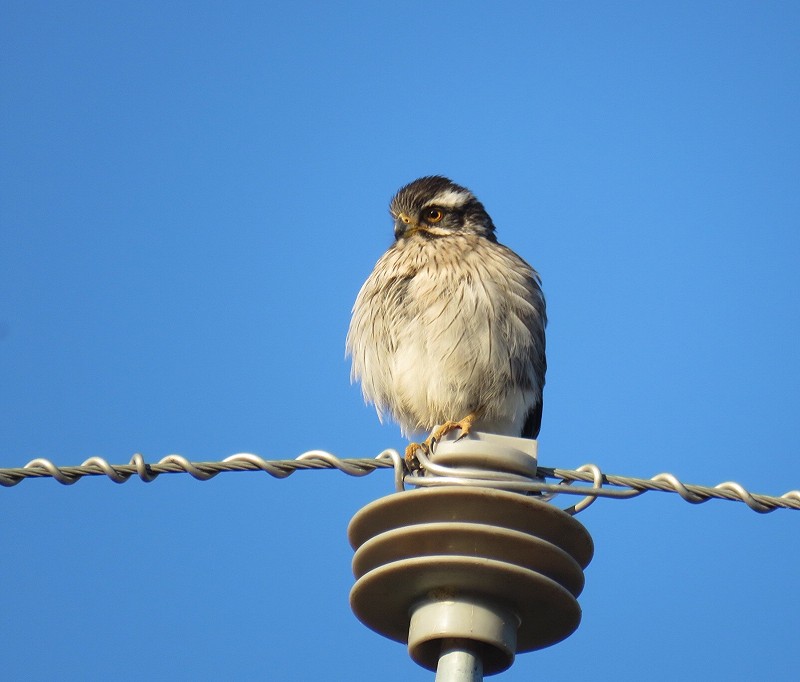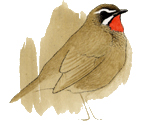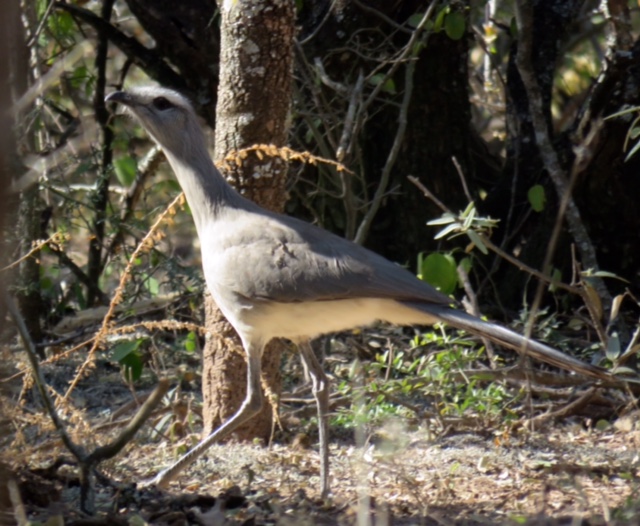Mooie foto' s. Veel geluk en veel goede soorten👍
http://www.arjandwarshuis.com/#biggestyear
http://world.observation.org/arjan.php
PLEASE MAKE A DONATION NOW!
August 3rd ENTERING ARGENTINA
Just after midday Ies and I had crossed the border into Missiones, the northeasternmost province of Argentina. At the border we were greeted by Juan Klavins, our guide and travel companion for the next nine days. Together we will drive south through Missiones towards the wet grasslands of Colonia Carlos Pellegrini, from there to Chaco NP, Copo NP and finally to our destination, the city of Tucuman in the far northwest of Argentina. We will visit Atlantic Rainforest, wet grasslands, wet- and dry Chaco and Andean Steppe; all the mayor biomes of the Argentinian north.
Due to a lot of hassle with the car rental company it took us about four precious hours before we were on our way to Uruguai Provincial Park, where we would set up camp for tonight. Within the last two hours of daylight we were able to get two new species; Great Dusky Swift and the beautiful Black Jacobin.
Due to that stupid car rental company we had dipped Iguazu Falls, but I guess birds come before world wonders ;-)
August 4th NEW BIRDS ARE GETTING SCARSE, TIME TO MOVE SOUTH
After a cold night in the tent – Ies and I had only sleeping bag liners – we were on the Uruzu bridge, hoping to catch a glimpse of the rare Black-fronted Piping-guan. We waited for over an hour, but the birds didn’t show. With big game birds like this it’s often a matter of luck and in this case we had probably finished all our luck in Brazil.
We did find two good birds, Southern Bristle-tyrant and Blackish-blue Seedeater, but we knew that besides the Guan there was not much else to find anymore, so we decided to head south towards the village of San Pedro. There we would spend the coming two nights with fellow Dutchman and world’s leading woodpecker researcher Martjan Lammertink and his wife and two kids.
We did find an incredibly good bird in a park adjacent to the village of San Pedro, the peculiar and threatened Canebrake Groundcreeper, which Juan skilfully pointed out to us through the thick bamboo, in which the bird makes its home.
August 5th TRACKING THE MOST ELUSIVE WOODPECKER IN THE NEOTROPICS
Around 5:30 AM – when it was still dark – we were on our way to Cruce Caballero Provincial Park. Our goal was to find some special night birds before daybreak. We started very well with two male Long-trained Nightjars on the road, but the real fun started upon arrival at the Cruce Caballero headquarters. Both Tawny-browed Owl and the rare Silky-tailed Nightjar were calling actively. We decided to start with the Tawny-browed Owl because we had played hide-and-seek so many times in Brazil without actually seeing it. This time we finally had success with this fantastic species which showed very well! The nightjar however refused to leave cover.
After this early success we continued with an excellent set of difficult birds in the form of Creamy-bellied Gantcatcher, Pavonine Cuckoo and Ultramarine Grosbeak. Best, however, were two exceptionally showy Planalto Tapaculos.
Back at Martjan's place in San Pedro, his wife Utami had just prepared lunch for us while Martjan himself had just returned from five gruesome days in the field. He had some exciting news. He and his team had caught and radio tagged their first Helmeted Woodpecker of this season! Even better news was that Martjan suggested to visit a sleeping hole of a female Helmeted Woodpecker with us this very afternoon!
And so it happened that we were on our way to Cruce Caballero for the second time today, this time with a fair chance of seeing one of the rarest and most elusive woodpeckers in the Neotropics!
First we had to walk for an hour or so through the beautiful Atlantic Rainforest of Cruce Caballero (picking up one of Martjan’s camera traps along the way) before we finally arrived at the base of a huge tree. Martjan silently pointed at a natural opening in this tree: ‘this is where the bird will hopefully fly in between 6 and 6:25 PM, if by then it hasn’t shown up, it must have found a different roosting place’. It was just 5 PM, which meant that we had one hour of waiting ahead of us, one hour of serving as a fast-food restaurant for mosquitos.
Finally it was 6 PM and the moment of truth had arrived, would the bird show up? Then it happened! A bird swooped overhead and landed in a tree next to us, we aimed our binos, it was the Helmeted Woodpecker! For the next 10 minutes we watched this absolutely stunning bird in absolute silence, while it performed its whole roosting ritual, a mesmerizing experience!
August 6th RARE BIRDS IN VANISHING GRASSLANDS
Around 5 AM we said goodbye to Martjan and his family and started heading southwest towards Colonia Carlos Pellegrini, the Argentinan equivalent of the Pantanal. It is here that some rare and endangered grassland species have their stronghold. We hadn’t included this place in our original itinerary, but since we cleaned up the Atlantic Rainforest we could take two days off our Missiones itinerary.
After about six hours driving we turned right onto a dirt road that took us into a vast area of grassland and farms. Our first big target was the vulnerable Black-and-white Monjita, which we found rather quickly perched on a roadside fence. Another good find was a Bearded Tachuri. Then began the search for one of the most threatened birds of Argentina, the Yellow Cardinal. This beautiful species is declining rapidly all over its already fragmented range. Threats include habitat loss, nest parasitism by Shiny Cowbirds, chick predation by botflies and illegal capture for the pet trade.
The weather wasn’t ideal with strong winds and cloudy sky, so we struggled to find this rare bird. Then Juan asked permission at a small local farm to walk around the bushy habitat, a brilliant move because only five minutes of searching later we saw three Yellow Cardinals, including one stunning male.
After checking in at the wonderful Ecoposada del Estero – which lies adjacent to a big marsh full of birds – and a quick lunch, we went searching for our most wanted species in these wet grasslands, the adequately named Strange-tailed Tyrant. Weather conditions had gotten worse after lunch, which meant that it was getting dark fast. We had nearly given up on seeing the bird today when Juan suddenly hit the brakes, he had found a male Strange-tailed Tyrant sitting on the fence! What a great bird to finish the day with!
August 7th FROM THE GRASSLANDS TO THE WET CHACO
After a quick breakfast we packed our bags and headed west. Our first stop was at the same place where we had seen the Strange-tailed Tyrant the day before. Luckily, today we found no less than eight birds of which five adult males. What an amazing species!
Another unexpected find was a Bay-crowned Wren-spinetail, a difficult species anywhere and a fantastic record this far north!
When Juan saw a suitable looking field we made another stop and looked for the threatened Ochre-breasted Pipit, which after some taping came flying overhead, calling loudly.
We arrived at the Chaco NP campsite around 9 PM and upon arrival we were pleasantly surprized, staying there was free of charge and there were hot showers, Wi-Fi and charging points! We were already dozing off in our tent when suddenly a Great-horned Owl started calling right above our tents so Ies and I went out on our flip-flops and obtained some fantastic views.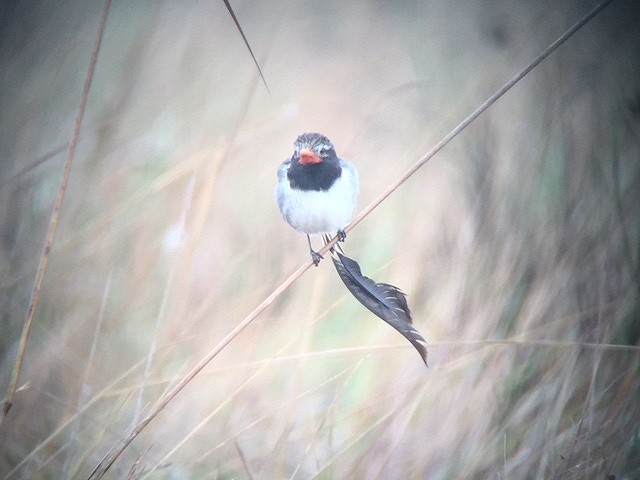
August 8th CHACO NP
To me the chaco forest is a bit like the African miombo woodland. It is a biome not well known and rarely visited by foreign birders (except a tiny bit of chaco in the northern part of the Pantanal), still there is a wide range of bird species found only in this specific forest type. The chaco can be divided in the wet and the dry chaco, we would visit the latter region first.
Two fantastic large woodpeckers make their home in the chaco, the Cream-backed- and the Black-bodied Woodpecker. Both were calling and drumming around the campsite when we woke up, but we only managed to see Cream-backed.
After a quick breakfast we went into the forest in search of chaco specialties. Great Rufous Woodcreeper, White-fronted Woodpecker and a very sneaky Spotted Rail were among the highlights.
For the afternoon session we decided on visiting some of the flooded areas outside the national park, but characteristic for the Chaco. Our big target was the minute Ringed Teal and to our pleasant surprise it was locally common. In addition to this cute little duck we saw an unexpected southern migrant, Black-capped Monjita, alongside the first northern waders like Greater- and Lesser Yellowlegs and Pectoral Sandpipers. North meets south, very fascinating indeed.
August 9th FROM THE WET TO THE DRY CHACO
When we woke up today there was a fantastic pair of Black-bodied Woodpecker foraging right next to our tent, a fantastic start of the day! Since we had seen most of the wet chaco species we decided it was time to continue towards Copo NP, which is situated in the dry chaco.
The landscape gradually got dryer the further we got west and with that dryness the first specialties appeared, like Many-coloured Chaco-finch and the funny looking Chaco Puffbird.
After checking in at a small hostel in the nearby dusty village of Pampa de los Guanacos, we proceeded towards the entrance of Copo National Park. On the track were several Brushland Tinamous, but the biggest surprise was a GIANT ANTEATER that crossed the road about 200 meters in front of us!
We could only bird around the entrance of Copo since apparently there was a cheeky Puma that had harassed some tourist lately. Of course we wanted to go look for that Puma, but the park staff thought different about that unfortunately.
Before dusk we found a beautiful Olive-crowned Crescentchest, several Crested Gallitos and the localized Quebracho Crested Tinamou, hopefully we would see these specialties tomorrow.
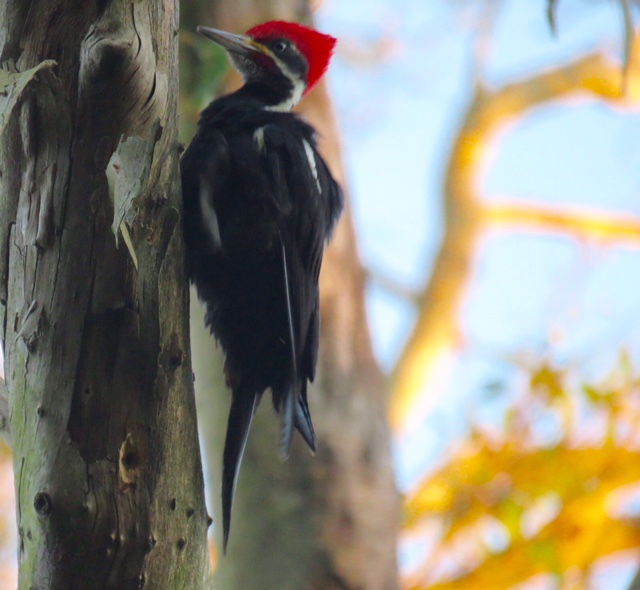
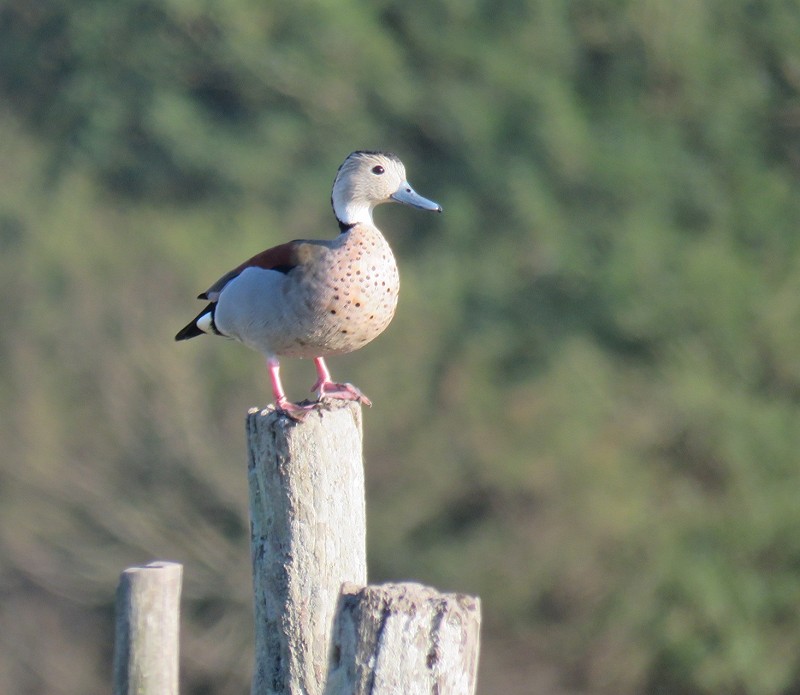
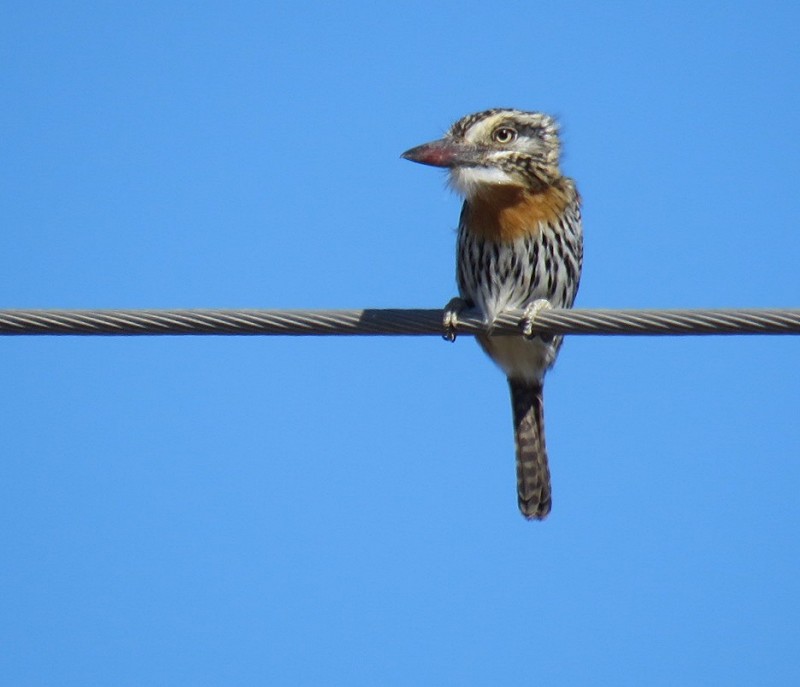
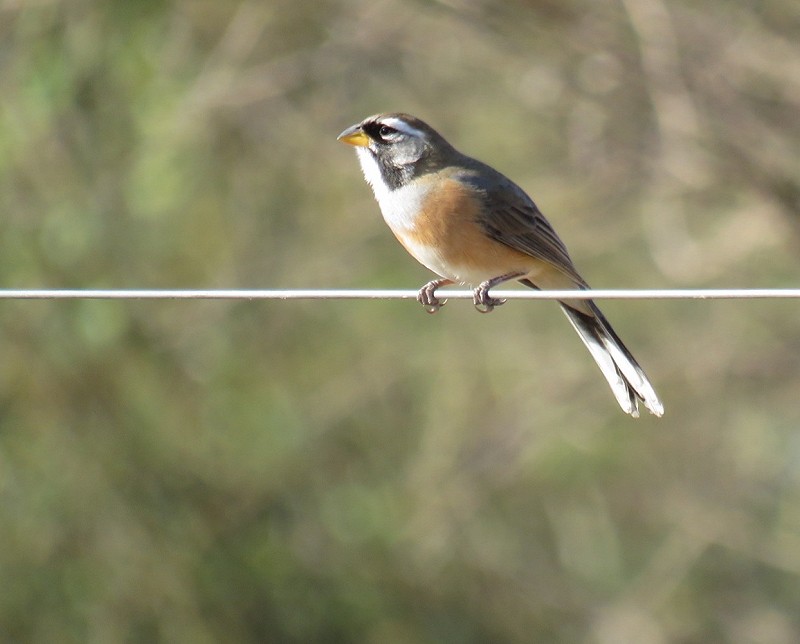
August 10th SEARCHING FOR THE QUEBRACHO CRESTED TINAMOU
One chaco specialty in particular was very high on our wish list, the range restricted and very cool looking Quebracho Crested Tinamou. This peculiar bird is only found in the northern part of Argentina and southern Bolivia and is nowhere easy to find. Early morning we heard one calling, but seeing the bird proved impossible. This was also the case for a Black-legged Seriema, another most wanted chaco specialty.
It was sad to see that most large trees had disappeared from this area. Like the cerrados in Brazil and the miombo woodland in Southern Africa this a much underappreciated ecosystem and with the eyes of the world focussed on logging of the worlds’ rainforest, these less well known biomes could be in much more trouble than we think.
In the afternoon we got lucky! As we drove back to the park we spotted a distant Tinamou on the track in front of us, a Quebracho! I managed to take some record shots before it disappeared in the forest, awesome!
Another much unexpected find was a female Carbonated Siera-finch, found and identified by Juan. This poorly understood migrant had never before been recorded this far north!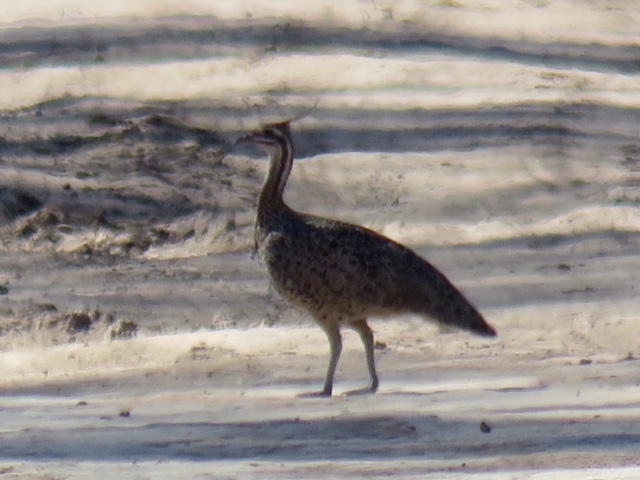
August 11th TO TUCUMAN!
We had 600 km of driving ahead of us so we left early. However we had a couple of really big targets along the way Tucuman so no need to get bored!
When we were just an hour on the road, we struck gold when we found a Spot-winged Falconet sitting on a roadside pole. This diminutive raptor can be hard to find so it was great to see it this well.
But it got even better… Juan decided to take a sandy side track through some dry chaco that looked promising. First there was a big disappointed when we found the feathers of a freshly killed Black-legged Seriema, but as we made our way back one suddenly crossed the track and showed amazingly! Yes!
Our final stop was in de sieran-chaco near Tucuman, where we looked for our two last possible chaco specialties, the Chaco Earthcreeper and the beautiful Black-crested Finch. I was rather sceptical about finding the Earthcreeper especially, but Juan’s stakeout proved spot-on! We found both and finished our road trip through northern Argentina with an almost perfect score!
Arjan Dwarshuis
http://www.arjandwarshuis.com/#biggestyear
http://world.observation.org/arjan.php
PLEASE MAKE A DONATION NOW!